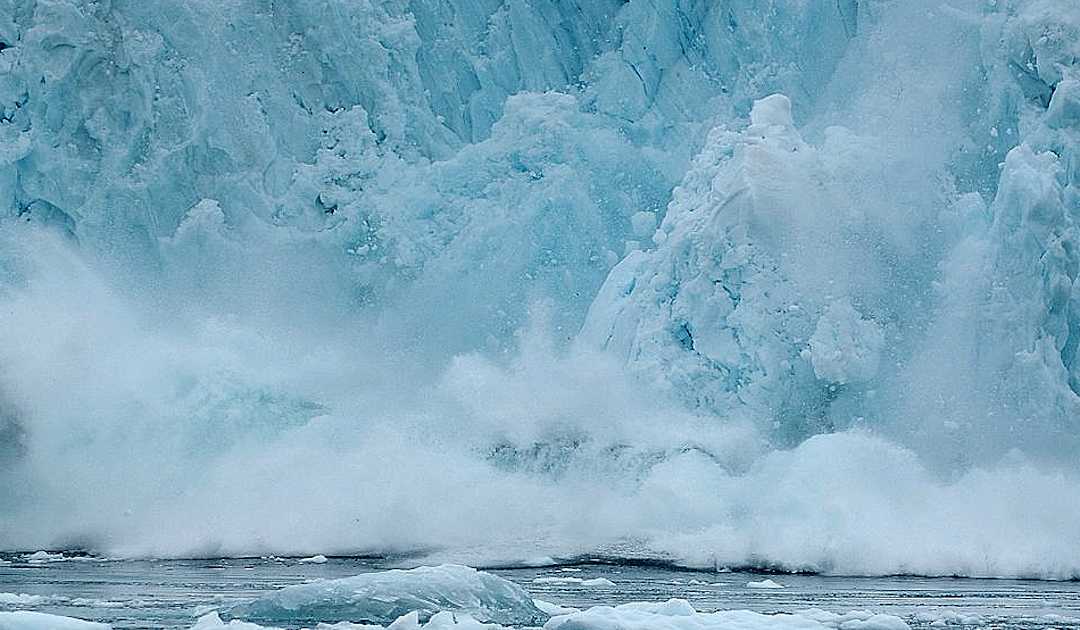
The past weeks and months have been characterized by extreme weather events worldwide. According to experts, these are likely to increase further as a result of climate change. An international study shows that Antarctica will also experience more frequent and stronger extreme events in the future. At the same time, the authors raise the crucial question of whether the existing protection schemes are still sufficient at all.
The picture painted by Professor Martin Siegert of the University of Exeter and his colleagues of the future of Antarctica is not all that bright: More frequent extreme events such as increased melting of ice on land and in the surrounding ocean, collapse of coastal ice shelves, increased heat waves, overexploitation of fish and krill stocks, and increased introduction of invasive species by humans, with all the corresponding consequences for Antarctic wildlife and plants, could increase in the coming years and decades. Accordingly, Antarctic Treaty Parties and their committees for the protection of the Antarctic environment urgently need to go over the books, and the rest of the world needs to reduce CO2 emissions to zero. These are the findings and conclusions of a review study published this week in the journal Frontiers in Environmental Science.


Driven in part by extreme events outside the polar regions attributed to climate change and the current situation of Antarctic sea ice, the team’s study aimed to open up the discussion around extreme events in Antarctica. Dr. Caroline Holmes, BAS sea ice expert and co-author of the study noted, “Antarctic sea ice has been grabbing headlines in recent weeks, and this paper shows how sea ice records – first record highs but, since 2017, record lows – have been tumbling in Antarctica for several years.” To conduct the study, the team looked at known extreme events in the atmosphere/weather, ocean, sea ice, ice shelves and glaciers, and the impact of such events on marine and terrestrial diversity.
Extreme events and their effects
Led by Professor Siegert, the team of authors not only listed the events, including their consequences and causes, but also asked whether they would be repeated and intensified if fossil fuels were to continue to be burned and global warming were to increase as a result. The models on which the predictions are based were shown here to still have uncertainties when it comes to the question of when and how much. “Whereas it is an open scientific question as to the level some of these events can be attributed to fossil-fuel burning, in the vast majority of cases it is virtually certain that continued greenhouse gas emissions will lead to increases in the size and frequency of events, even if the causes to date cannot be attributed to it,” the team concludes from the findings.
The study shows that certain areas and organisms in the different Antarctic habitats have a high degree of resistance to change, at least for the moment. The team also points out the large regional differences regarding the effects of extreme events. Nevertheless, they conclude that “the fragile and vulnerable Antarctic environment could be exposed to significant stress and damage in the coming years and decades”.
The authors also point out in their study that although some of the extreme events are part of natural cycles, many can also be directly and indirectly attributed to human activities. Moreover, they cannot be considered individually and in isolation, but have cascading effects.



Are environmental protocols of the Antarctic Treaty still sufficient?
In light of the study’s findings, the authors reason, the question arises as to whether the conservation measures and provisions set forth in the Antarctic Treaty and monitored by various commissions would be sufficient at all. “In the face of rapid environmental change and uncertainty, Parties must consider whether existing tools are sufficient to provide the maximum chance that Antarctic ecosystems and species will be able to persist into the future,” the team writes. An example of this is certainly likely to be the inability of the Commission for the Conservation of Antarctic Marine Living Resources CCAMLR to agree on the establishment of marine protected areas and also to impose greater regulation on krill fishing.
The fact that states, while advocating for protective measures in the region under the Antarctic Treaty, are at the same time failing to meet their targets set out in the Paris Climate Agreement when it comes to fossil fuel consumption is also denounced by Martin Siegert. “Nations must understand that by continuing to explore, extract and burn fossil fuels anywhere in the world, the environment of Antarctica will become ever more affected in ways inconsistent with their pledge,” he explains.
Dr Michael Wenger, PolarJournal
Study link: Siegert et al (2023) Front Environ Sci (11) Antarctic extreme events, doi.org/10.3389/fenvs.2023.1229283.
More about this topic





